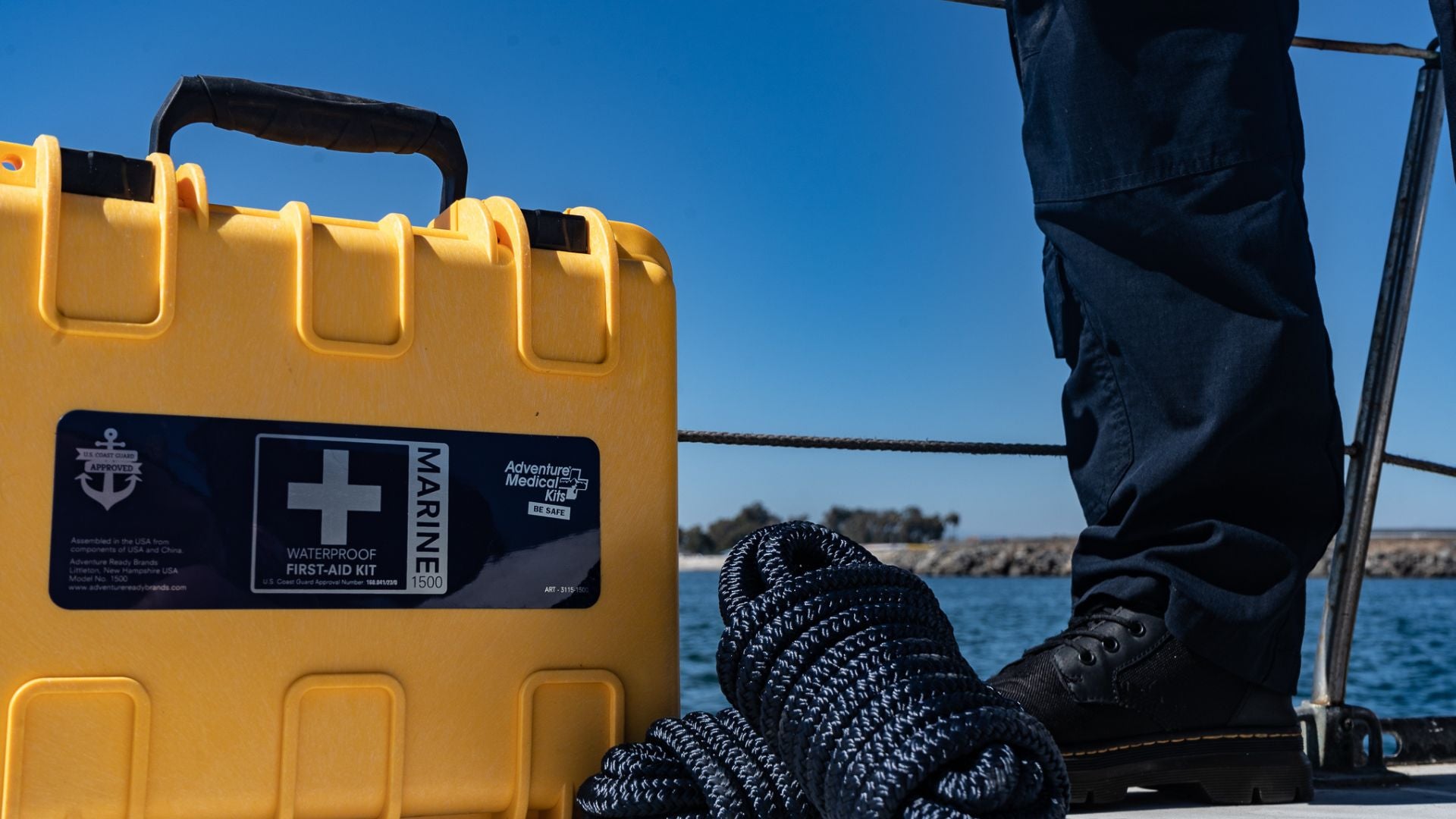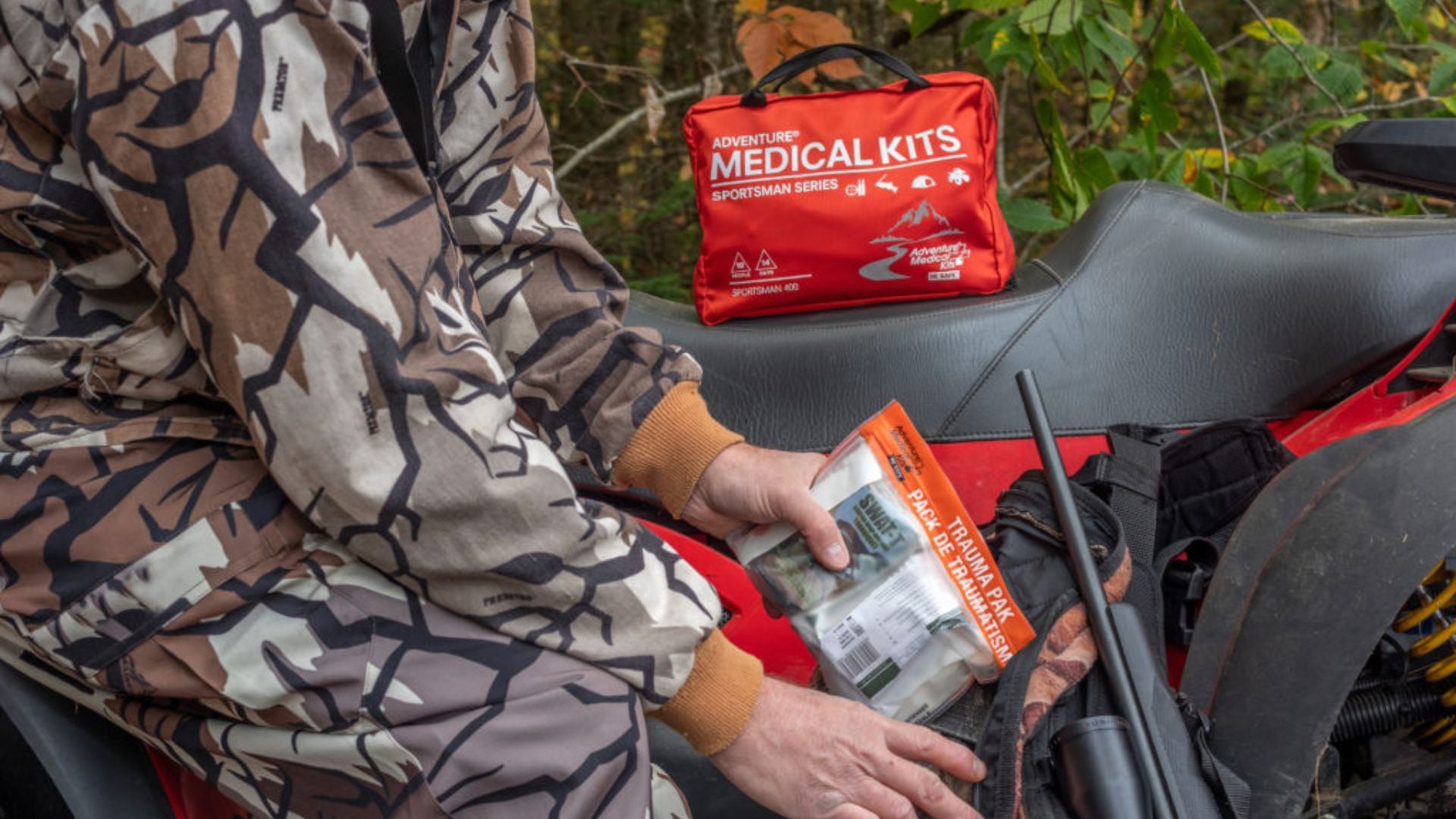Spring boating season may be here, but water temperatures are still cold enough to cause problems for boating enthusiasts. Adventure Medical Kits’ marine medicine consultant Dr. Michael Jacobs provides tips for surviving cold water immersion. And always, make sure you have a Marine First Aid Kit on board from Adventure Medical Kits, which all contain the book pictured below for first aid instructions on the water.

AMK's A Comprehensive Guide to Marine Medicine includes tips for treating hypothermia.
Don’t fool yourself into thinking the cold water you sail over is dangerous only when it contains pancake ice and glacial runoff; you could be dead wrong. In fact, water temperature as high as 60ºF can kill you just as easily. Fall into cold water without a personal flotation device (PFD; see sidebar below), and you could drown in the span of a few minutes, often within 10 feet of safety. Statistics indicate an incapacitating response that is rapid in onset and prevents individuals from swimming 10 feet to save their lives. Swimming ability does not improve survival.
We now appreciate that sudden immersion in cold water (less than 60ºF) initiates a series of incapacitating reflexes that increase the risk of drowning. Indeed, the most common cause of death from accidental cold-water immersion is drowning, not hypothermia.
The initial response, which affects breathing, heart function, and muscle strength, is called the Cold-Shock Response. This is a series of reflexes that begin immediately upon sudden cooling of the skin following cold-water immersion. The initial phase of the cold-shock response peaks during the first 30 seconds, and lasts just 2 to 3 minutes. During this time, blood pressure, heart rate, and the workload of the heart all increase, making the heart more susceptible to life-threatening rhythms and heart attack. Simultaneously, gasping begins, followed by rapid and deep breathing. These reflexes can quickly lead to accidental inhalation of water and drowning. This rapid and seemingly uncontrollable over-breathing creates a sensation of suffocation and contributes to feelings of panic. It can also create dizziness, confusion, disorientation, and a decreased level of consciousness.
It is important to realize that this initial phase of the cold-shock response is brief and that your actions during this time can vastly improve your chance for survival.
If you fall into cold water, it is imperative you try to bring your breathing under control while keeping your head above the water; your life depends on it! Try to calm yourself, do not panic, and realize these reflexes will pass. Just keep your head above the water and consciously slow your breathing. Swimmers experience difficulty synchronizing their swim stroke with these breathing changes and can easily inhale water and drown, even in calm seas. It is safer to tread water and maintain airway freeboard – distance from the water level to the mouth and nose. Breath-holding time is also reduced in cold-water immersion, making escape from beneath a capsized vessel more difficult; kayakers have less time to set up and roll their craft upright.
Over the next 30 minutes, the muscles and nerves in the extremities cool. Swimming becomes arduous, weak, and ineffective. Loss of muscle strength makes it difficult to perform basic survival procedures. Boaters who fall overboard are often too weak to reboard their craft, get into a life raft, climb the ladder of a rescue boat, or simply grasp a rescue line. Victims in cold water quickly lose the ability to rescue themselves or assist in their own rescue. In icy water, you have only 10 to 15 minutes of effective muscle strength.
If you fall into cold water, be prepared for violent shivering and intense pain. You can help slow your rate of cooling, and increase your survival time, by following these guidelines:
Do not undress. The added weight of clothing and boots will not impair your ability to float. Clothing traps water next to the skin where it is warmed, retarding heat loss; this is similar to the protective effect of a diver’s wet suit. Clothing also traps air, which provides some insulation and buoyancy. If a short swim is your best chance of survival, then remove any extra clothing and footwear to reduce drag and improve agility.
HELP. If wearing a life jacket, assume the Heat Escape Lessening Posture: cross your hands over your chest and press your arms closely to your sides; draw your knees up toward your chest and cross your ankles. This position facilitates maximum heat retention by protecting the most vulnerable areas of the body.
Tread Water. If you don’t have a life jacket, move slowly and tread water using slight movements. Exercise wastes precious energy and accelerates the rate of cooling by increasing blood flow to the extremities. Activity also flushes cold water through protective clothing, increasing heat loss. Avoid long swims. You have a 50-50 chance of successfully swimming half a mile in 50º F water. If you must swim, pace yourself with an easy stroke, such as the breaststroke, that keeps your head and face out of the water.
Get out of the water. Always reboard or climb on top of a swamped or capsized boat and await rescue. Once out of the water, stay out, no matter how cold the air temperature or how chilled you may feel. You’ll survive longer out of the water because the rate of cooling in water is 25 times greater than in air at the same temperature.
Wilderness Medical Society (WMS) member Dr. Gordon Giesbrecht, a noted hypothermia expert, summarizes the sequence of events and how much time you have after sudden unplanned immersion in frigid water:
ONE-TEN-ONE
ONE minute of gasping, when you need to control your breath.
TEN minutes of meaningful strength to pull yourself out of the water.
ONE hour before you lose consciousness.
Sudden immersion in cold water need not be a fatal event. Understanding the physiology and exercising appropriate actions for self-rescue will greatly improve your chances for survival. Do not be intimidated by cold water, but respect the challenge it presents.
Treatment
Victims who avoid drowning still face the risk of acute hypothermia as the body’s core temperature decreases. If the victim is fully awake and shivering, then treatment for mild to early moderate hypothermia is reliably effective and evacuation is unnecessary. The victim is capable of generating internal rewarming heat by sustained vigorous shivering if given fluids and carbohydrates, but fuel is required for continued shivering. If dry, and insulating clothing is not available, provide an extra windproof vapor barrier by dressing the victim in foul weather gear to minimize heat loss. When practical, wrap the victim like a burrito in blankets, sleeping bag, sails, or sail bag.

Treat hypothermic victims by wrapping them in blankets.
After prolonged cold-water immersion, generally more than 2 hours, it is prudent to evacuate the victim to a medical facility. These patients are perilously close to losing both consciousness and the shivering reflex. They are incapable of rewarming themselves, and they require more aggressive and sophisticated rewarming methods. Careful monitoring is required because of the many metabolic complications arising from advanced hypothermia. Some sailors have been rescued at sea after prolonged cold-water immersion in an apparently stable and conscious state, only to later collapse while walking around the rescue craft or while taking a hot shower. These people are severely hypothermic and have low blood pressure. Their condition will rapidly deteriorate with activity and during any attempt at external rewarming. They must be kept still, in a supine position, and handled gently in order to avoid physically stimulating the heart to change its rhythm or stop beating. During helicopter evacuation, use a litter with straps so the person can remain horizontal and securely bundled. The rotor blades create a wind-chill from the downwash and can increase the level of hypothermia. Dress and wrap the victim properly during transfer.
Types of PFDs
I: Off Shore Life Jacket: Turns most unconscious people face up in the water even in rough seas, often found on ocean-going boats and commercial watercraft.
II: Near Shore Buoyant Vest: Turns some unconscious people face up in the water in calmer water.
III: Flotation Aid: Common for all purpose boating but will not turn unconscious person face up.
Requires treading water to keep face/head out of water; often these are kayaking, waterskiing, or fishing vests.
IV: Throw Device: Usually a boat cushion or life ring.
V: Special Use: This includes devices that don’t fit in other categories, such as some kayak
or windsurfing vests not approved as Type II or IVSpecial note: for kids, vests should have a groin strap to prevent vest flying off when jumping in water. They should also be sized correctly.
For more info: Boat U.S. Foundation.
– – –
Michael Jacobs, M.D., is the Medical Consultant for AMK’s Marine Series of medical kits. He is also the MedSail Founder and Program Director: Safety at Sea and Medicine for Mariners Conferences; Medical Director, Vineyard Medical Services, Martha’s Vineyard, MA; a USCG Licensed Captain; co-Author of A Comprehensive Guide to Marine Medicine (included in most Marines Series kits) and author of Survival at Sea, Textbook of Wilderness Medicine.













